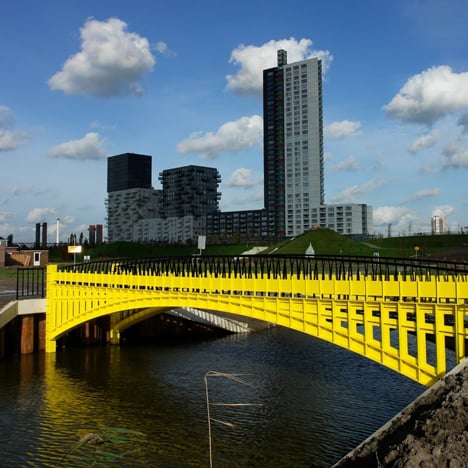
Fictional bridges on Euro banknotes constructed in the Netherlands
News: the fictional bridges depicted on Euro banknotes have been been transformed into reality at a new housing development near Rotterdam.
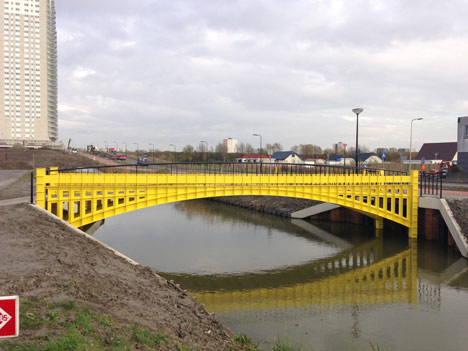
Dutch designer Robin Stam was inspired by the seven images of archetypal bridges originally created by Austrian designer Robert Kalina to represent key phases in Europe's cultural history.
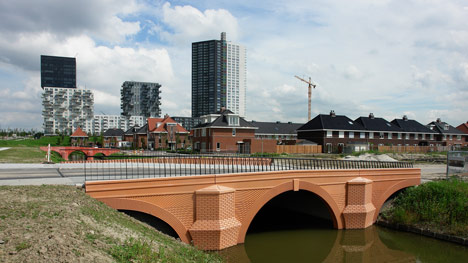
The illustrations on the banknotes show generic examples of architectural styles such as renaissance and baroque rather than real bridges from a particular member state, which could have aroused envy among other countries. "The European Bank didn't want to use real bridges so I thought it would be funny to claim the bridges and make them real," Stam told Dezeen.
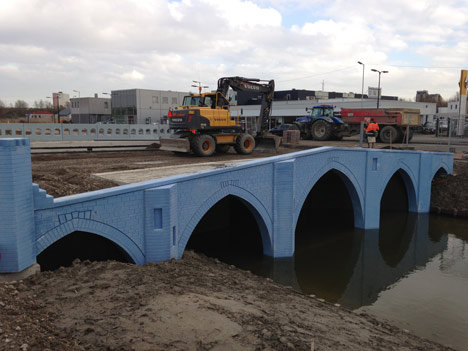
The local council responsible for constructing a new housing development in Spijkenisse, a suburb of Rotterdam, heard about the idea and approached Stam about using his designs.
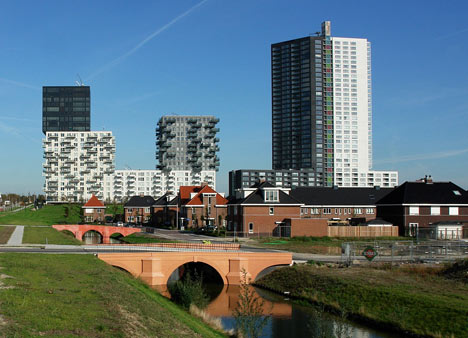
"My bridges were slightly more expensive but [the council] saw it as a good promotional opportunity so they allocated some extra budget to produce them," says Stam.
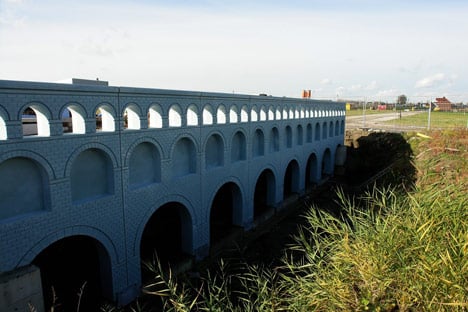
The bridges are exact copies of those shown on the banknotes, down to the shape, crop and colour.
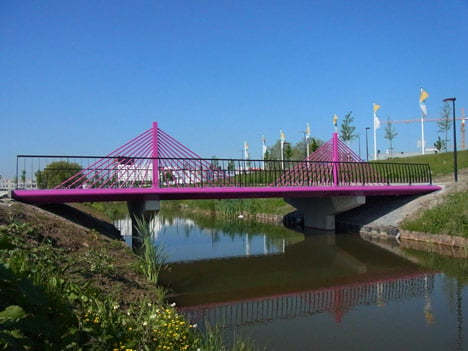
"I wanted to give the bridges an exaggerated theatrical appearance – like a stage set," adds Stam, who poured dyed concrete into custom-made wooden moulds to make them.
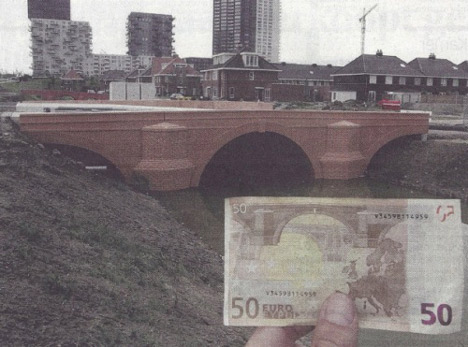
All seven bridges surrounding the development have been completed and are being used by cyclists and pedestrians. Stam says they have divided opinion among residents: "Some people's initial impression is that the bridges are ugly but when they find out the story behind them they find it really funny."
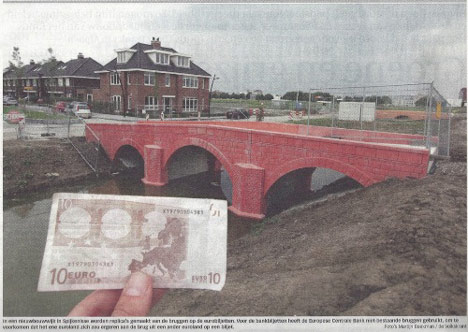
In his recent Opinion column, Sam Jacob talks about the made-up landmarks on Euro notes as he ponders the historic and cultural symbolism of money.
The latest Dezeen stories about bridges include a heated pedestrian bridge in Sweden and Zaha Hadid's Sheikh Zayed Bridge in Abu Dhabi.
See more bridge designs »
See all our stories about design and money »
Here are some more details from the designer:
On the first of January 2002 new banknotes were introduced in Europe. In addition to windows and gateways, these seven banknotes also depict several bridges. Each bridge has an individual appearance, all of which can be recognised as having originated throughout certain periods in European cultural history: Classical Antiquity, the Roman period, the Gothic period, the Renaissance, Baroque and Rococo, Iron- and glass architecture and lastly contemporary, twentieth century architecture.
Designed by Robert Kalina, the bridges are meant to illustrate the tight collaboration and communication between Europe and the rest of the world in general, but more importantly, amongst the European countries in particular. However, the bridges portrayed in the banknotes are fictional.
They have been designed to prevent one single member state from having a bridge on their banknote opposed to other states not having any depicted in theirs. In other words, “member state neutral” banknotes.
Now wouldn’t it be amazing if these fictional bridges suddenly turn out to actually exist in real life? And wouldn’t it be even more amazing if these bridges were to be built in a new housing project in the former centre of urban development and suburb, Spijkenisse.